Dining table size
This is the most important table setting. Each person sitting at the table needs 60 cm of tabletop length. At the same time, the chairs in the required quantity should be placed freely, without touching, so that they can easily be moved up and down from the table.
When choosing a dining table, you can focus on the following numbers: the distance from it to the wall should be at least 70 cm, if there is no planned passage. The width of the table, as a rule, should be in the range from 85 to 105 cm.
If the kitchen or dining area is modest in size, and periodically there is a need to gather a large number of people at the table. In this case, pay attention to transforming furniture. A folded table will not take up much space, and by the time guests arrive it can be expanded, than increasing the capacity by several places, usually from two to six.
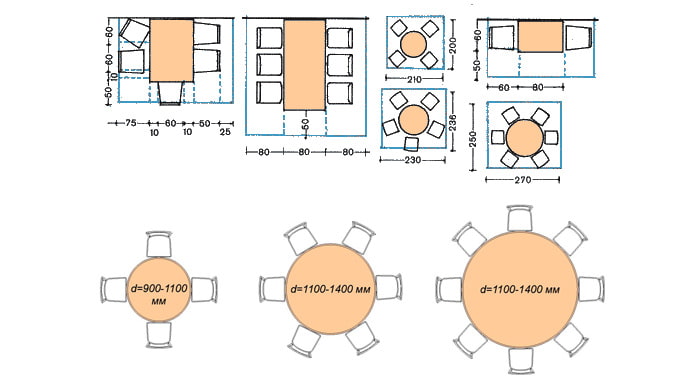
Dining table shape
Types of dining tables vary in shape. In many ways, it will determine the size, because these parameters depend on each other.
- Rectangle. This is the most common form of dining table. As a rule, it is suitable for almost any room. In small dining areas or kitchens, such a table is placed near a wall or in a corner, thus saving free space. In large dining rooms, a rectangular table can stand in the center, or a meter away from the wall.
- Square. A square-shaped table cannot be large - in this case, the dishes that are in the center will be inconvenient to take. This form is convenient if four people plan to sit behind it.
- Circle or oval. Round and oval tables are suitable for large rooms. At the same time, the dining table in the interior of the kitchen becomes the center of the composition, its main semantic, and often decorative accent.
Tip: If the dining room has a square shape, it is better to purchase a table with a round countertop, and put it in the center. With the elongated shape of the room, rectangular or oval tables are more suitable.
Design features of the dining table
Depending on the design of the tables, they can be divided into two main types:
- stationary,
- folding (transforming table).
Folding tables differ in the folding mechanism, and can both be folded out and moved apart, and have folding parts. The sliding transformation mechanism implies the use of an additional plate, which in the folded state “hides” under the main tabletop, and can either be removed from there or taken out using additional devices.

The folding tables can change not only the size of the countertop, but also its height above the floor. Such designs are often used when folded as coffee tables, and when unfolded - as dining tables.
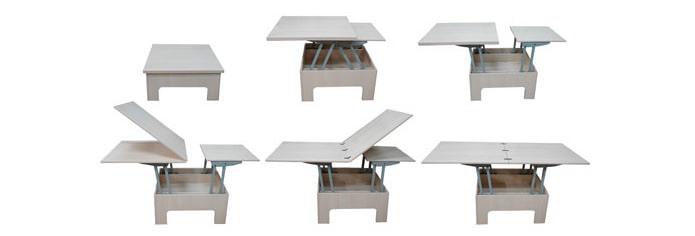
If there is very little space, you can stop the choice of a dining table on a table-book. When folded, the width of such a table does not exceed the width of the nightstand, it occupies a small area and can be used as a stand for a lamp, or a bookshelf. To bring it into working condition, it is necessary to raise the countertops on both sides and extend the folded “legs” to provide support.
The choice of material for the dining table
Dining tables are made from a variety of materials, the choice is determined by personal preferences and operating conditions. So, if the dining area is located in the kitchen, and you plan to use the table not only for food but also for cooking, the countertop should be just care resistant to dirt and moisture.
Each of the materials used in the manufacture of various types of dining tables has its own advantages and disadvantages:
- Chipboard. This is the most budget option. The main advantage is the low price. The main disadvantage is the short service life.
- MDF. A table made of this material is more expensive, but more durable than a table made of chipboard. It is more resistant to moisture and temperature extremes.
- Array of wood. Tables made of natural solid wood - a classic option. Reliability, durability, attractive appearance, the ability to fit into almost any interior style - these are the advantages of this material. The downside is the high price.
- Glass. A glass dining table in the interior of the kitchen allows you to solve several problems at once. Firstly, it meets all the requirements for such rooms, it is easy to wash, has a high moisture resistance. Secondly, the glass top due to transparency seems to dissolve in the air, and thus does not clutter the interior, which is especially important for small rooms.
- A rock. Stone countertops are made from both natural and artificial stone. Typically, tables with stone countertops are made to order according to design sketches. Moreover, an artificial stone for tables, especially large sizes, is preferable to natural, as it is less fragile and able to withstand heavy loads. You need to keep in mind that stone is a very dense material, and the countertops made of it are very heavy, so you need to calculate whether your flooring will support the weight of the table.
Legs at the dining table
Before choosing a dining table, decide how many legs it should have. This is a very important point, affecting not only the appearance, but also the usability. There are only four options, except for the fact that if the dining table is too long, he may need additional support.
- One. Tables with one support in the center are much more convenient if the table has a round shape - you can sit anywhere, there will be no interference. However, there are no large round tables on one leg, as a rule, no more than four people can sit at the same time, in extreme cases - six.
- Two. The two legs at the dining tables are usually small in width. This is not a very convenient option; you can get hooked on such a table from only two sides.
- Three. When choosing a dining table with a round shape and a large size, you can opt for the option of three pillars - it is convenient for sitting and looks quite aesthetically pleasing.
- Four. The tabletop on four legs-supports is a traditional, and the most common option. They can be made of any materials and are characterized by stability, durability and convenience.

Style
Different types of dining tables are designed for different interiors. It is necessary that the table fits into a certain style, emphasizes its features, harmonizes with the objects surrounding it and the decoration of the room.
- Minimalism. In the premises of this style, tables with glass worktops look good on supports made of dark wood or chromed metal. They can have a countertop of any shape.
- Classic. Rectangular tables on four stable, massive legs made of wood and decorated with carving elements are ideal for classic interiors. It is especially good if the table is made of oak or other valuable types of wood.
- Provence. Coarse natural wood furniture is the hallmark of the style. It can have a natural color, and can be painted and aged.A white wooden dining table without decorations or small details will perfectly match the atmosphere of rustic simplicity.
- Loft. The main materials used in this style for the dining table are raw wood and metal. Metal legs and a wooden countertop are ideal.
The dining table in the interior of the kitchen is the main design element, so try to keep its style in line with the chosen interior direction, but do not forget that the color of the furniture affects the perception of the room.
The white color of the table is a solution that will help lighten the space of the kitchen, prevent the feeling of “jamming” of furniture, add freshness and cleanliness. However, when choosing a table, first of all pay attention to the convenience of its use, as you will use it for many years as intended.


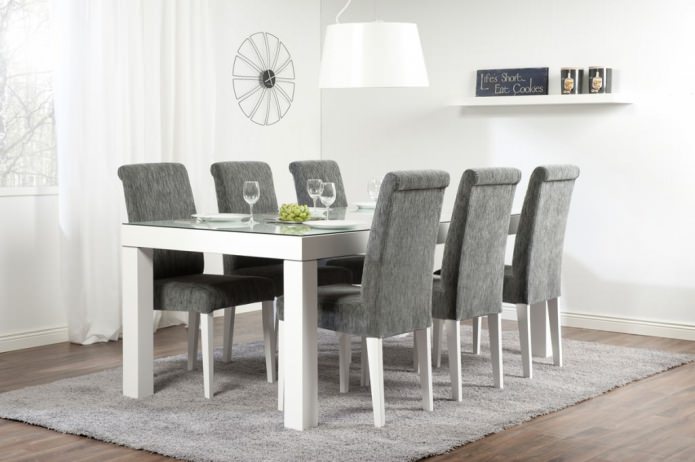
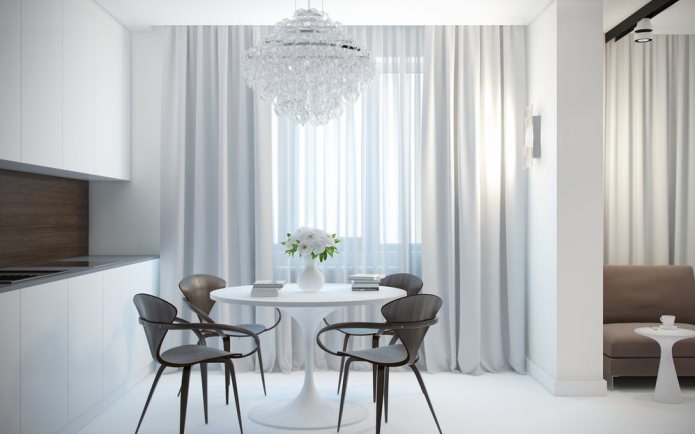
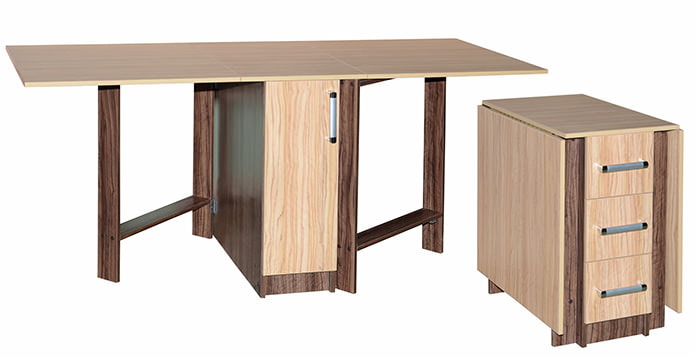
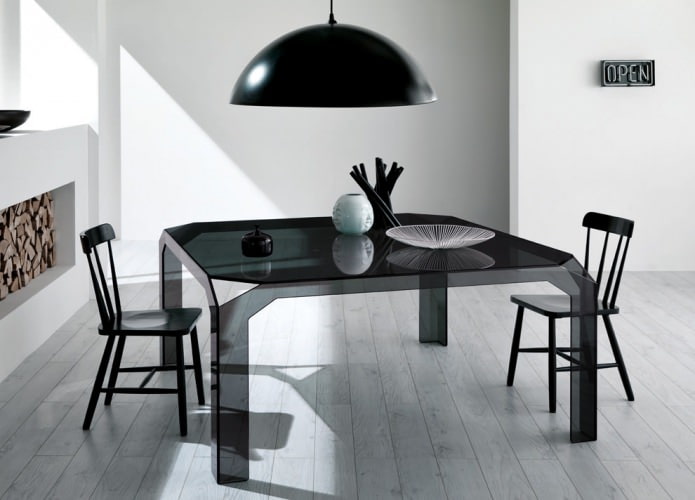

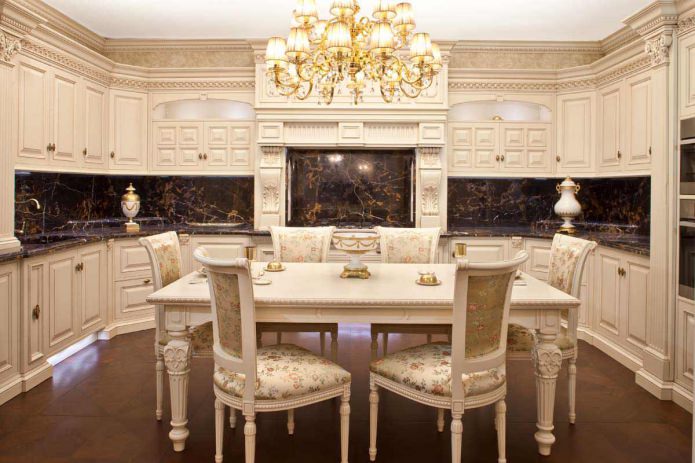
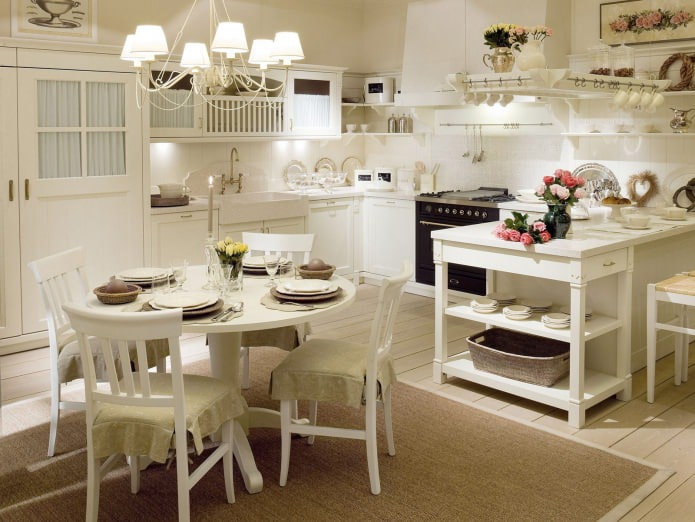
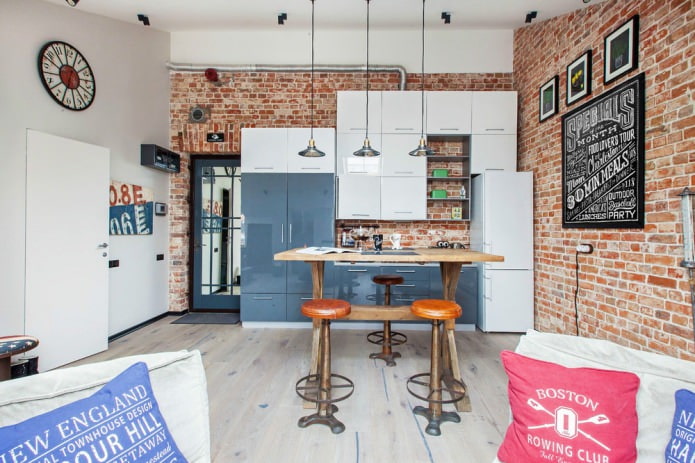
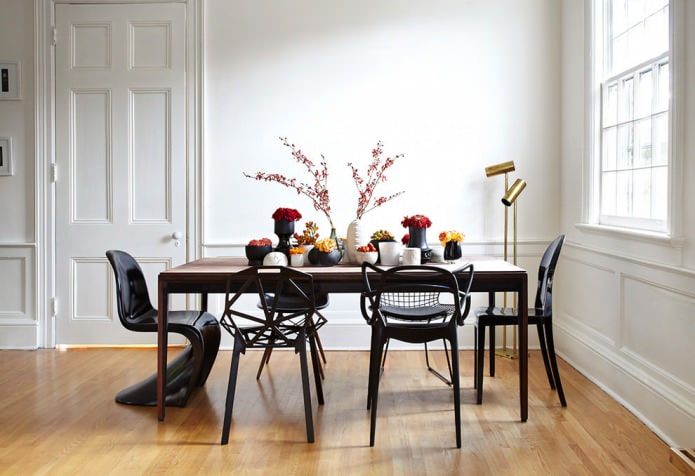

 How to choose the color of the sink for the kitchen?
How to choose the color of the sink for the kitchen? White kitchen: features of choice, combination, 70 photos in the interior
White kitchen: features of choice, combination, 70 photos in the interior Black suite in the interior of the kitchen: design, choice of wallpaper, 90 photos
Black suite in the interior of the kitchen: design, choice of wallpaper, 90 photos Modern design ideas for curtains for the kitchen - we make out the window stylish and practical
Modern design ideas for curtains for the kitchen - we make out the window stylish and practical Wallpaper design: 65 photos and ideas for a modern interior
Wallpaper design: 65 photos and ideas for a modern interior Design of a white kitchen with a black countertop: 80 best ideas, photos in the interior
Design of a white kitchen with a black countertop: 80 best ideas, photos in the interior